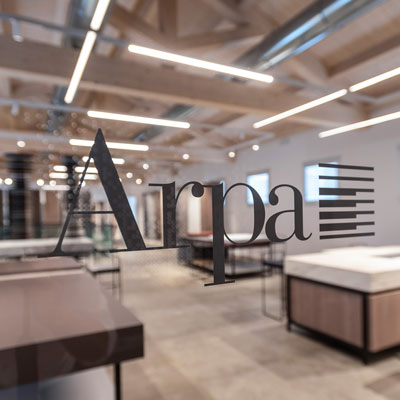THE PRODUCTION PROCESS
Behind the apparent simplicity of high-pressure laminates lies a highly-evolved technology requiring powerful production facilities as well as a sizable investment in research and development. HPL production cycle is regulated by European legislation EN 438 and ISO 4586, which establish requirements and production standards. In Arpa, quality controls occur at every stage of the process: from impregnation, to semi-finished product, to thermo-lamination, up to the testing and classification of the finished product.


